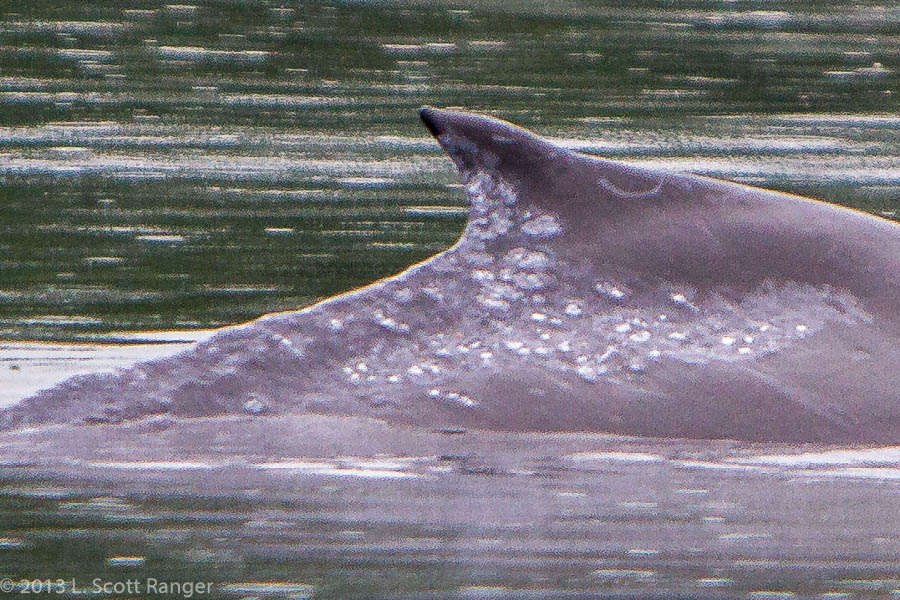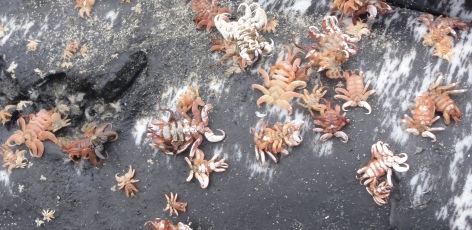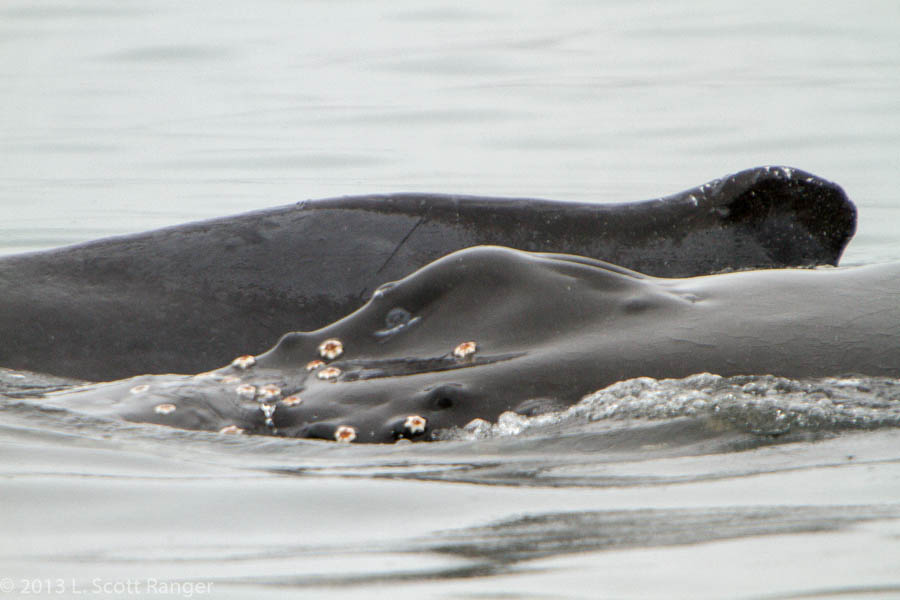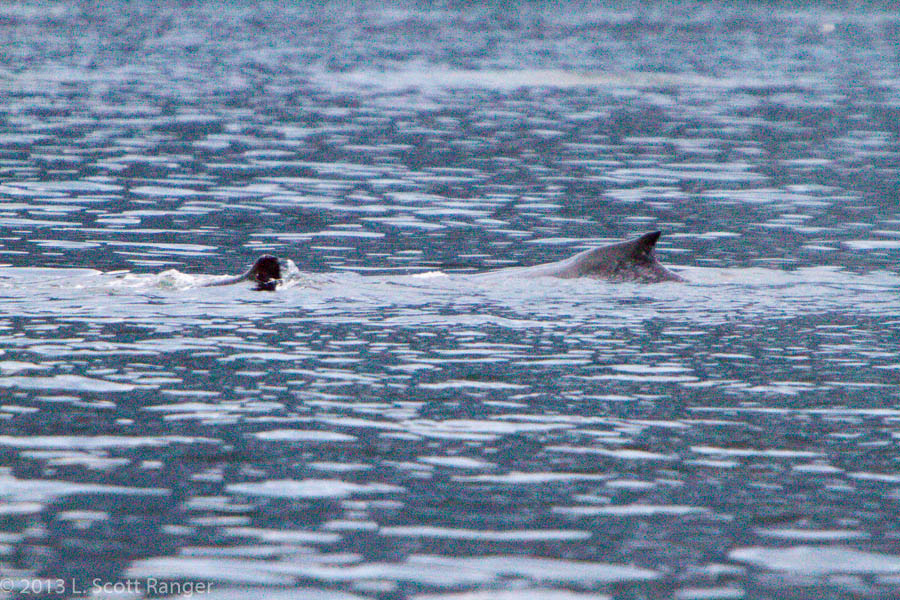2070, Barnacles, her 2012 Calf
Somehow I missed the early appearance of Barnacles 2012 baby as this my first photo of it taken on August 8 in North Pass. My first sighting of mom was back on June 20, also in North Pass with her series of tail slaps that are featured on her own page. Was I paying too much attention to her and ignoring whales around her? I must have been as when it is obvious that this is her baby, it's already pretty well grown.
|
This rather extreme crop of the calf's dorsal fin region illustrates a character that provides me with the ability to instantly identify the calf.
What are these gray, scaly series of oddly circular patches that appear to be on the surface of the skin? I describe it as a lesion (an abnormality of an animal's skin), lacking any deeper knowledge of it. Jay Beedle noted in his "Weekly Whale Feature: 'Black Barnacle'" in the Juneau Empire on June 25, 2010 that "from pictures I took of Black Barnacle in 2008 she had a number of whale lice in the area between her dorsal fin and tail". This led me to some research on them. |
|
This image of humpback whale lice, Cyamus boopis
Lütken, 1870, from the Vancouver Aquarium bears little resemblance to the lesion in my photo, and for this reason I don't think the calf has an infestation of this "louse" that is specific to humpback whales. While they look like lice, they are totally unrelated and are actually arthropods. The nature of the lesion remains unexplained, if useful for identifying the whale all season long. |
|
Here mom's very unique dorsal fin looms above junior's blowhole and the rear of its rostrum. The small size of the calf isn't quite as apparent in the close view, but it is less than half the size of mom's.
Note that while the calf on August 18, 2012 is only about eight months old, yet it already has quite a population of barnacles on its rostrum. These are Coronula diadema (Linnaeus, 1767), unique to humpback whales. This illustrates that it doesn't take long for the minute larvae to find a leviathan to attach to for a long ride to waters rich in food for both the barnacle and the whale. |




